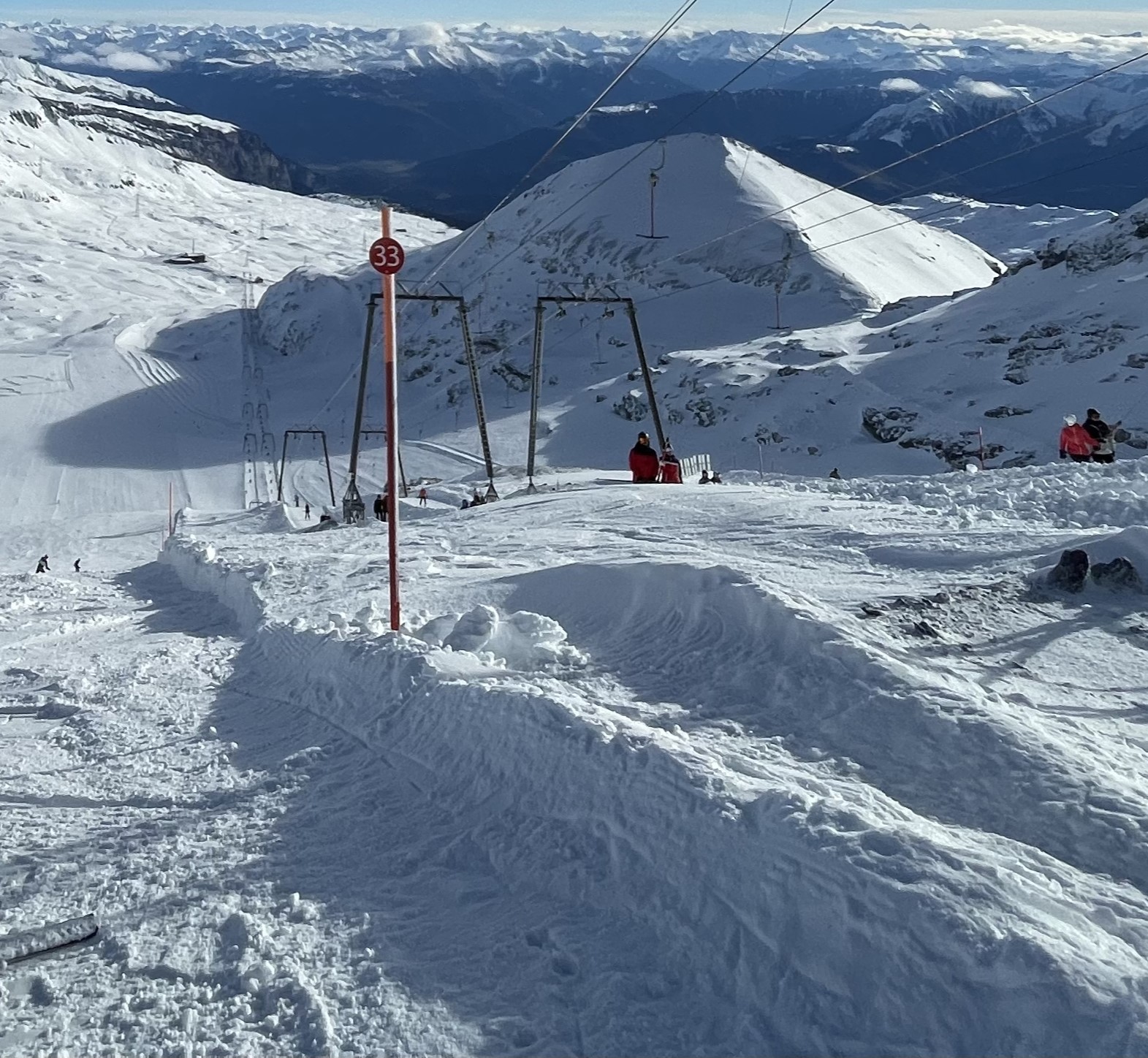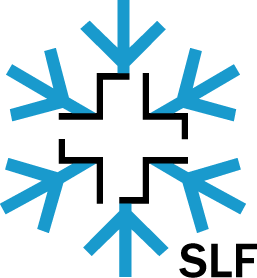
Will ski slopes still look like this in the future? Go find it out via the following link!
{Link}
Today, we want to finish our final text. After that, we will continue with our video.
Stay tuned
[Title] The impact of artificial snow and its future
Picture of a ski slope with grass on both sides of it
[Short Intro: Research question] (short audio) How will the use of artificial snow change in the future?
[Relation to the Project - what did you know before and what new treasure of experience did you gain?] We already knew, that the use of artificial snow is rising from year to year, but we did not know how much money one kilometer of an artificial snow ski slope costs.
[Main body]
[Methodology] We researched on the topic and we had an interview with a researcher from the SLF Davos.
[Media Creation] We have a short audio and we are in the final steps of our teaser video.
[Experience, Reflection] We are surprised how natural artificial snow is despite it being artificial.
[Name of the authors] Sedric Kretschmer, Janik Altermatt & Philipp Hitz
[Sources] Facts from our interview
Today, Sedric is sick and our goal is, to finish our little teaser video.
The next steps will be to create the final post and check the different tasks.
Hello everybody!
We are pleased to announce that we will be conducting an interview with Fabian Wolfsperger from the Davos Snow and Avalanche Research Institute (SLF) next Tuesday, 4 April 2023.
We are looking forward to an exciting exchange and valuable input for our project!

The first words, that came in my mind, when I thought about our project:
Energy consumption of artificial snow, the costs to build an artificial snow producing-system, the water consumption, possible bad effect on the ecosystem
Vision:
In the end of our project, we have done an interview with a worker of the WSL research centre. With that knowledge, we can visualize better, how and in which extent the use of artificial snow will increase in the future.
Our project aims to address the challenges of energy consumption and sustainability in ski resorts. These ski resorts are known to be high energy consumers, especially for the production of artificial snow. Therefore, the main objective of our project is to find and promote innovative solutions that will help ski resorts to reduce their energy consumption and improve their sustainability, while ensuring an enjoyable skiing experience for visitors.
To achieve our goals, we will conduct an in-depth study and analysis of the current energy consumption of ski resorts and assess the environmental impact of artificial snowmaking. Based on this analysis, we will identify and evaluate potential technologies, practices and measures that can help reduce energy consumption and improve the sustainability of ski areas.
Our project aims to address the energy consumption and sustainability practices of ski resorts. Ski resorts are significant consumers of energy, with a large portion being used for the creation of artificial snow. This project seeks to identify and promote innovative solutions that can help ski resorts reduce their energy consumption and increase sustainability, while also maintaining the quality and quantity of snow for skiers and snowboarders.
Objectives:
Conduct research and analysis on the current energy consumption of ski resorts and the impact of artificial snow creation on the environment.
Identify and evaluate potential technologies, practices, and policies that can reduce energy consumption and increase sustainability in ski resorts.
Here are 10 important terms regarding artificial snow in ski resorts:
Snowmaking: The production process of snow.
Snow guns: The machines which produce snow.
Compressors: Compressors for compressed air, which a snow gun requires .
Water pumps: The water must be pumped from a lake to the snow cannon.
Snow quality: The snow quality must be right to guarantee the perfect ski conditions.
Snow grooming: The slopes must be maintained for optimal conditions.
Temperature inversion: The artificial snow works only in combination with natural snow.
Snow depth: Snow depth is important to cover the ground.
Snow density: The snow density helps to make the slope durable and stable.
Wet bulb temperature: The cooling limit temperature is also called the wet bulb temperature, it is the lowest temperature that can be achieved by evaporative cooling.